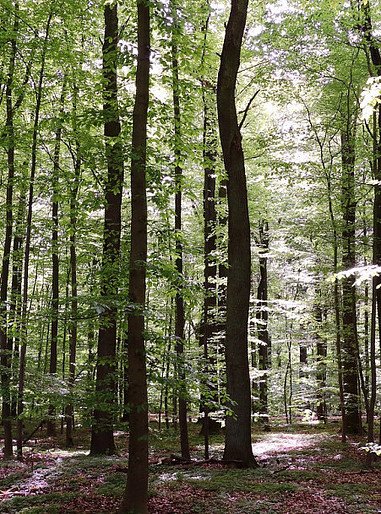As humans. We tend to look at the world around us with eyes that see only what appears immediate. We do the same with trees. When we look at a tree, we see it as a still, stable object. But is it?
The same applies to the forests and the trees that make up the forests. The life we humans live now is 70, 80 or 90 years. Compare that with is a Spruce tree in Sweden that is known to be over 9,500 years old.
Trees Communicate
When you contemplate the incredible difference in life span between us and trees, you can begin to understand the difference in time scale. To us, a tree seems still, never moving, but in it’s reality, it is extremely active and communicative.
The electrical impulses which is one of the ways trees communicate, travel through their roots at 1/3 of an inch per second. So, when one tree sends a communication to another through its roots and fungi in the soil, in our human

understanding, it seems like nothing is happening—as if there is no communication.
But in reality it is communicating. Just very slowly in relation to our human world.
Trees are a Community
On this matter of different worlds, I might add the misconception we have when we think we are helping the forest by not allowing it to become “too dense”. We think that by clearing away some the older trees, we are allowing the newer generation of trees to grow and thrive, as now they have more direct sun.
Sadly, we’ve forgotten that there is a design in all living things. Societies that are not so technically absorbed have known this for generations. Our great grandparent’s great grandparents knew all about this as well.
Because we tend to look at trees as just suppliers of wood, we may overlook the fact that trees in a natural forest environment are a community of families and also raise their young.
Trees Raise Their Young
You may be thinking, “Now that’s going too far! How can a tree raise another tree?”. We’ll, before you dismiss the idea, think about how younger trees grow in the midst of the older trees.

In particular. Lets consider a forest of beech trees.
The older trees shield the younger from the direct sun. The natural forest is able to keep a balanced microclimate with high humidity and dim light.
The mother tree as well as the other mature trees of the community shade the little ones with their enormous crowns. The crowns close up, creating such a dense covering. Only about 3 percent of the sunlight filters through to the forest floor.
Trees Discipline Their Young
This allows the little ones just enough light to photosynthesize. That is, just enough to keep living. Not very much left over for growth. These young trees are actually being deprived of sunlight. But, there is a purpose behind this. It’s for their protection.
Slow growth during the youth of a tree is important for its future survival and longevity. Normally a tree on its own at about 80 years of age, would be considered by us humans as mature and would have plenty of wood to supply.
But in the forest, a 120 year old tree is still a youngster. It typically will have a trunk as thin as a pencil. It will be no taller than you or I. The deprivation of light actually slows the growth, which makes it denser, tougher and much more resistant to breakage. It’s able is able to resist fungi and heal quickly if anything causes it damage.
While these younger trees have to wait, the parent trees are actually passing sugar and other nutrients to them through their roots. The parents in their own way, nurse them and sustain them until the parents pass off the scene, leaving a gap of sunlight for the youngster to grow wide and large and take its place in the community.
